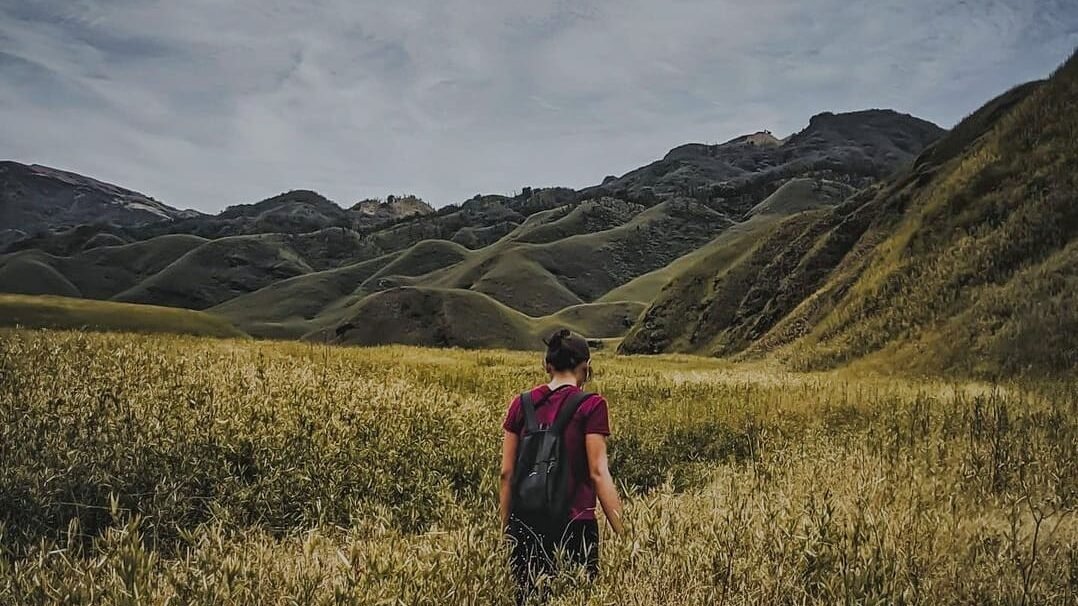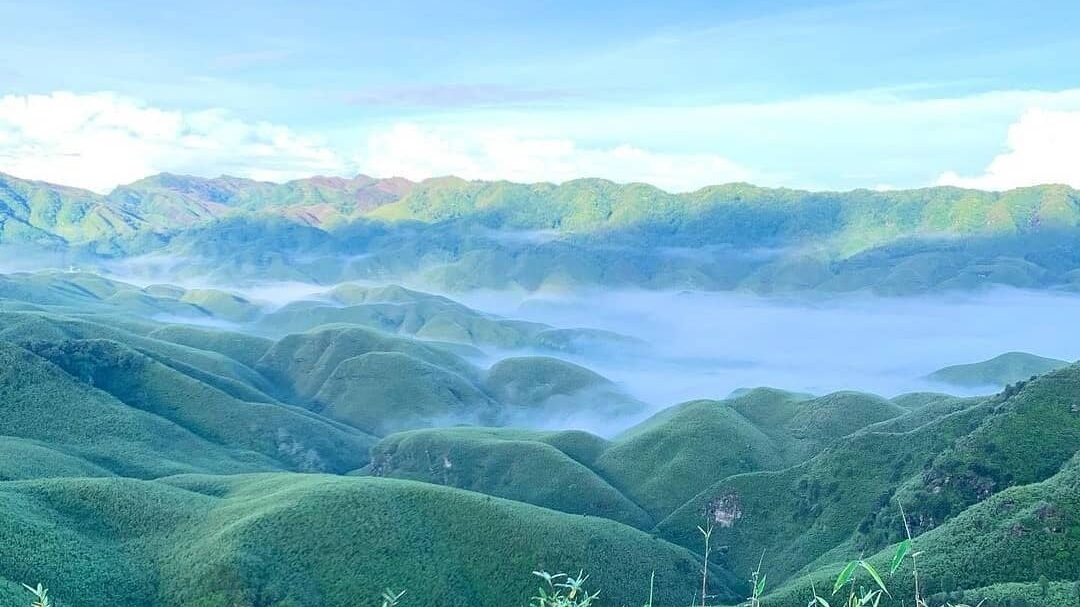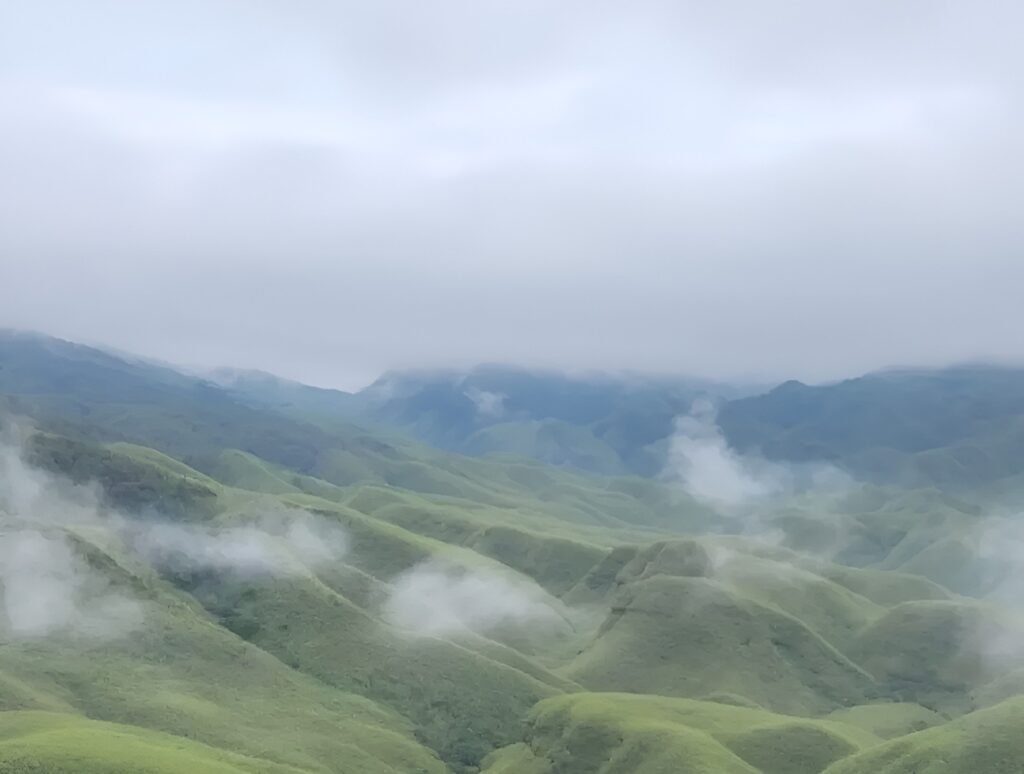If the idea of wandering through rolling hills carpeted in vibrant wildflowers, beside icy streams and beneath untouched blue skies, captures your imagination, then you must discover the Dzukou Valley. Nestled on the border between Nagaland and Manipur, Dzukou Valley has earned a mystical reputation, celebrated for its breathtaking beauty, rich history, and enduring tribal legacy. This comprehensive guide covers every detail: history, population, economy, beautiful places, trip charges, landmarks, and notable personalities associated with Dzukou Valley.
What Is Dzukou Valley?
At an altitude of 2,438–2,452m above sea level and spanning about 27 sq km, Dzukou Valley is best known as the “Valley of Flowers of the North-East.” Verdant meadows, endless bamboo thickets, and crystalline streams make this valley a haven for trekkers, nature lovers, and photographers. The word “Dzukou” carries meanings in local dialects: from “cold water” (Angami and Mao languages) reflecting the chilly streams, to “soulless” or “dreamlike,” hinting at both its sombre winters and its mystical beauty.
Getting There: Trip Charges & Travel Guide
Dzukou Valley remains offbeat, so some planning is required.
How to Reach
- Nearest city: Kohima, Nagaland (30km away)
- Nearest railway station: Dimapur (74km from Kohima)
- Kohima to the starting point: 14km
- Starting points: Viswema Village or Zakhama
Trip Charges:
- Travel to Kohima: ₹5,000–₹10,000 round trip
- Local transport/taxis: ₹2,000–₹3,000 (per group/ride)
- Trek guide, permits, food (trek package): From ₹5,999/person; packages include guide, transport, food, and permits
- Entry fee: ₹30–100/person
- Accommodation: Dormitory/guest house ₹50–₹500/night
- Other costs: Blanket/mattress rental ₹50–₹100/night; food ₹2,000–₹4,000 for the trip
- Total trip budget: ₹10,000–₹25,000/person for a full 3–5 day trek and stay
- Drone: ₹2000/30min
- Camera: ₹500
Best Season:
June–September: full bloom, rainfall and adventurous.
March–June & September–December: clear skies for trekking
Trekking Details:
- Viswema trail: Less strenuous, good for beginners
- Zakhama trail: Steeper, but offers fantastic views
- Duration: Trekking route spans 17km (5–6 hours from Viswema) and 15km (3–4 hours from Zakhama)
Eco-friendly practices are encouraged: Plastic is strictly prohibited, stick to designated trails, and respect wildlife.
History and Culture
Dzukou Valley’s history is closely tied to the folklore and traditions of northeastern India’s indigenous tribes. The Angami tribe of Nagaland and the Mao tribe of Manipur have contested, co-managed, and revered the valley for centuries. Legend says Naga scouts discovered the valley while seeking new land, but desolate winters led elders to see it as “soulless.” Over time, it became a shared ancestral treasure, with delicate tributes exchanged between local tribes.
The valley has spiritual associations, too. Locals believe the valley harbours spirits, especially along the pristine Kezo River. Folklore even tells of white elephants wandering and a beautiful female spirit who takes a male visitor every year, stories that add to Dzukou’s enigmatic allure.
Dzukou Valley is also the backdrop for seasonal festivals, most notably the Dzukou Flower Festival, which celebrates the valley’s miraculous bloom and marks cultural rituals for local tribes. Conservation is deeply embedded here, as local tribes and authorities strive to offset wildfire threats and habitat loss.
Geography and Population
Although Dzukou Valley is vast and lively, no human settlements exist within its boundaries. It’s a protected wild space; the population here is “zero” in terms of permanent residents. Instead, the closest villages (like Viswema, Zakhama, and Khonoma) serve as starting points for valley explorations. The Angami and Chakesang of Nagaland and the Mao of Manipur are the primary tribal communities living nearby.

Economy: Nature Over Commerce
Dzukou Valley itself isn’t a commercial hub; its “economy” revolves around eco-tourism, small-scale agriculture in neighbouring villages, and cultural activities. Trekking, camping, and guided nature tours are the valley’s primary income drivers. Local guides and homestay owners, mainly from the Angami and Mao tribes, provide services for trekkers, while artisans sell handicrafts and textiles in Kohima and surrounding towns.
The valley is famed for its vast bamboo plantations. While not exploited commercially within the valley, bamboo, cane, and alder trees play crucial roles in reforestation and local handicrafts, supporting sustainable practices in nearby communities.
Beautiful Places & Landmarks
Here’s what makes Dzukou Valley a bucket-list destination:
- Rolling Flower Meadows: Between June and September, wildflowers, including the endemic Dzukou Lily (Lilium mackliniae), dazzling rhododendrons, and euphorbias, blanket the valley.
- Dzukou River & Stream: The chilly, pure streams are believed to have healing properties.
- Japfu Peak: Overlooking the valley, it’s a challenging trek offering panoramic views of the entire region.
- Mysterious Caves: Natural caves dotted across the valley provide unique opportunities for exploration and shelter for up to 2,000 trekkers.
- Wooden Bridges & Bamboo Thickets: Scenic, rustic bridges arch over crystal-clear streams, surrounded by lush thickets, enhancing the peaceful vibe.
- Pulie Badze Wildlife Sanctuary: Adjacent to the valley, this protected area is home to rare Himalayan species.
- Khonoma Village & Kohima War Cemetery: Close to the valley, these landmarks are rich in cultural and historical value.

Flora and Fauna: A Biodiversity Hotspot
Dzukou Valley is a biodiversity haven:
- Flora: Rare wildflowers, the Dzukou Lily, dwarf bamboo (Sirundundinaria rolloana), rhododendrons, alder trees, medicinal plants like Aconitum nagaram.
- Fauna: Blyth’s tragopan (state bird of Nagaland), Rufous-necked hornbill, Western Hoolock gibbon, leopards, clouded leopards, Asiatic black bears, capped langurs, Dzükou Valley horned frog.
Famous People (Associated/Notable Visitors)
While Dzukou Valley doesn’t have a “celebrity list,” it is closely linked with renowned botanists like Hijam Bikramjit, who first identified the endemic Dzukou lily. Adventurers and travel writers from across India have documented their journeys here, but most notable personalities are local tribal leaders and conservationists whose stories may not be widely published.
FAQs About Dzukou Valley
Where is Dzukou Valley located?
Dzukou Valley lies on the border of Nagaland and Manipur, Northeast India, about 30km from Kohima.
When is the best time to visit?
The valley is most beautiful between June and September, when wildflowers bloom, though trekking is possible most of the year, except during peak monsoon and winter.
How much does a Dzukou Valley trek cost?
Expect trip charges to range from ₹10,000–₹25,000/person, including transport, accommodation, food, guides, and permits.
How do I reach Dzukou Valley?
Reach Kohima by road or rail (via Dimapur), then take a taxi or shared cab to Viswema or Zakhama, the trailhead villages.
Are there places to stay in Dzukou Valley?
Dormitories and guest houses in the valley offer basic accommodation; campsites are available for trekkers.
Is Dzukou Valley safe for solo travellers?
Yes, the valley is generally safe, especially on main trekking routes. Always hire local guides and follow eco guidelines.
Do I need a permit?
No special permit for Indian citizens, but an entry fee (₹30–₹100) is charged. International visitors may require an Inner Line Permit (ILP) in Nagaland.
What are the must-see locations in Dzukou Valley?
Dzukou Lily Meadows, Japfu Peak, flower festival, caves, streams, and surrounding villages like Khonoma and Kohima War Cemetery.
Final Thoughts
Dzukou Valley isn’t just a destination; it’s an experience, a soulful retreat offering spectacular natural beauty, fascinating history, and the warmth of tribal hospitality. Venture here for the wildflowers, stay for the serenity, and carry home the stories of one of India’s most enchanting, untouched landscapes.
If you’re planning your next adventure, make Dzukou Valley your wish upon a wildflower.
Quick Recap Table
| Aspect | Details |
| History | Tribal folklore, Angami & Mao ancestral claims, rich festivals |
| Geography | 2,438–2,452m altitude, 27sqkm, no settlements |
| Economy | Eco-tourism, local guides, crafts, sustainable agriculture nearby |
| Beauty Spots | Flower meadows, Japfu Peak, caves, streams, bridges, wildlife sanctuary |
| Trip Cost | ₹15,000–₹30,000/person for complete tour |
| Famous Person | Hijam Bikramjit (botanist, Dzukou Lily identifier) |
| FAQs | Location, best time, costs, permits, safety, must-sees |
